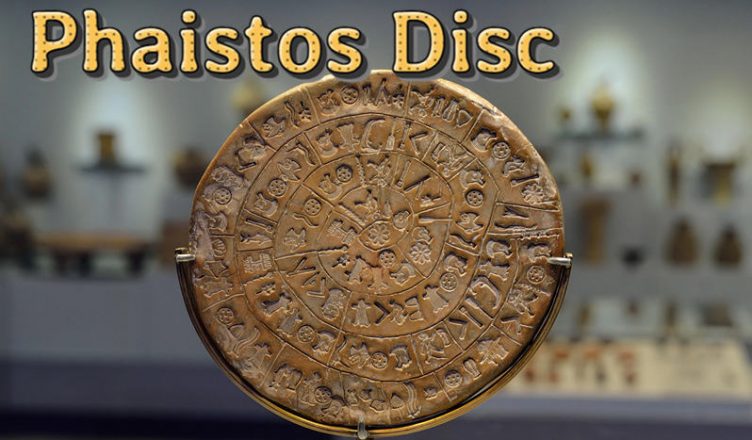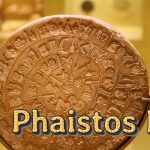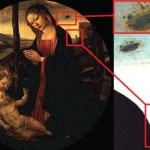The Phaistos Disc is an ancient artifact shrouded in mystery. This clay disc dates back to around the 17th century BC, with a diameter of approximately 6.5 inches, and it bears 241 pictorial symbols spiraling across both of its faces. The origin and meaning of the Phaistos Disc continue to fuel extensive debates and speculations within the academic community. How was this enigmatic disc created, and what do its symbols represent? This article delves into the history, controversies, and decryption attempts surrounding the Phaistos Disc, shedding light on a fragment of this ancient enigma.
1. The Ancient Enigma of the Phaistos Disc:
The Phaistos Disc is a mysterious clay artifact dating back to the 17th century BCE. It is a terracotta disc with a diameter of 6.5 inches, and both sides of the disc are inscribed with pictorial symbols, totaling 241 in number, arranged in a spiral from the outer edge to the center. The symbols display distinct spacing, suggesting they were engraved when the clay was still moist and pressed using two separate molds. The disc features 241 symbols representing various figures, animals, body parts, and objects, including some depictions of boats. The most common symbol is a person with a feathered headdress, resembling Philistine depictions in ancient Egyptian artwork. It is believed to originate from the ancient Luvian civilization in southwestern Anatolia, near the Mediterranean coast. The figures on the disc, including individuals with feathered headdresses, bear a striking resemblance to the attire of the people from Phaistos.
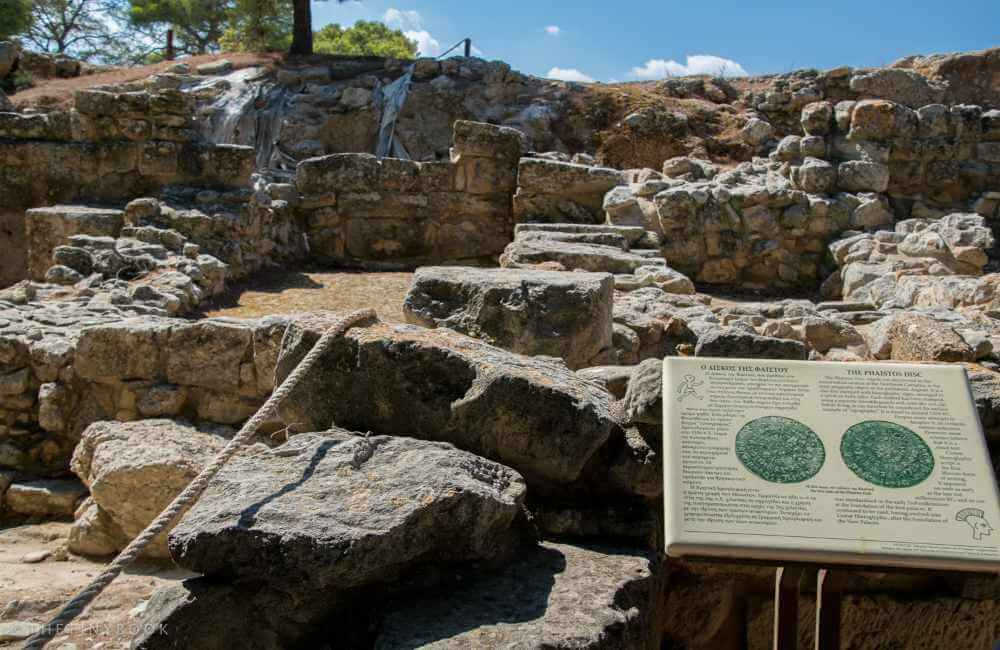
2. The Mystery of the Phaistos Disc:
This unusual discovery was found in 1908 in a storage chamber of an underground temple on the island of Crete, connected to the ancient Minoan palace of Phaistos. Archaeologist Luigi Pernier extracted the disc from a layer of black soil, dating it to the period between 1850 and 1600 BCE based on its context. The disc is made of fired clay, approximately 15 centimeters in diameter and about 1 centimeter thick, featuring symbols on both sides. The meanings of these symbols have never been understood in a way acceptable to mainstream archaeologists or ancient linguists. This is unusual for several reasons, most notably because it stands as a unique artifact.
3. Interpretation and Controversy:
The Phaistos Disc is a fired clay disc from the Minoan palace of Phaistos on the island of Crete, possibly dating to the Middle to Late Minoan Bronze Age (circa 2nd millennium BCE). It is approximately 15 centimeters (5.9 inches) in diameter and features spiral symbols on both sides. Its purpose and original place of production remain a subject of debate. It is currently on display at the Heraklion Archaeological Museum. Discovered in 1908 by Italian archaeologist Luigi Pernier at the Phaistos Minoan palace site, it contains 241 marks, including 45 different symbols, seemingly with pictographic “seals.” It is believed to have been created by pressing these symbols into a soft clay disc in a clockwise spiral sequence toward the center of the disc. The Phaistos Disc has captured the imagination of both amateur and professional archaeologists, leading to numerous attempts to decipher the meaning behind its symbols. It remains unclear whether it represents an alphabet, but most decoding attempts assume it to be an alphabetic script. Most further adopt syllabic writing, while others consider alphabets or logograms. Since it is generally believed that there is not enough context available for meaningful analysis, many consider deciphering attempts unlikely to succeed unless more indicative examples are found. Although the Phaistos Disc is widely regarded as genuine by archaeologists, a minority of scholars consider it to be a forgery or a hoax.
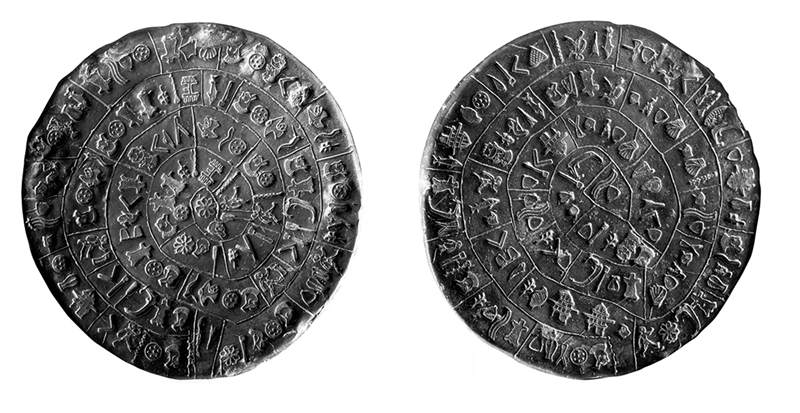
4. Authenticity of the Phaistos Disc:
The Phaistos Disc is generally considered authentic by archaeologists. The authenticity assumption is based on the excavation records of Luigi Pernier. Subsequently, the discovery of the Alkarochori Axe with similar script lent support to this assumption. Two scholars suggested that the disc might be a forgery or hoax from 1908. Thermoluminescence dating has never been used to establish its production date. In a 2008 book review, Robinson did not endorse the forgery argument but pointed out that thermoluminescence testing of the Phaistos Disc is crucial and that “it would be a waste of time no longer.” The Linear A inscriptions within the Knossos Ring (the Mavro Spelio Ring), discovered in 1926 and featuring linear A inscriptions arranged within a spiral, are similar to the Phaistos Disc. A seal discovered in 1955 displayed the only known parallel to the symbols on the Phaistos Disc. This is believed to prove the Phaistos Disc as an authentic Minoan artifact.
5. Character Direction and Deciphering Attempts:
Evans once suggested that the disc was inscribed from the center outward and should be read in that manner, as the simplest approach would be to place the inscriptions first and then adjust the disc’s size to accommodate the text. There was a consensus that he was mistaken, and Evans himself later changed his mind. Like the spiral inscriptions on the Mariano’s lead tablet, the script is written from the outside toward the center and should be read as such. The center of the spiral is not in the disc’s center, and some symbols closer to the center appear crowded, as if the creator was constrained by space. Since a group of symbols is arranged from top to bottom, it’s challenging to determine the order in which they should be placed. Apart from the issue of character direction on the disc, there are various viewpoints on how the characters on the Phaistos Disc should appear when transcribed into text. If read from the outside to the center, the disc itself might have a right-to-left direction. This means the reading direction becomes similar to the faces of humans and animals, akin to Egyptian and Anatolian languages. In this text, the characters on the Phaistos Disc are displayed in a left-to-right direction, with their forms mirrored in relation to their orientation on the disc. This is also a typical feature of edited Egyptian and Anatolian hieroglyphic texts.
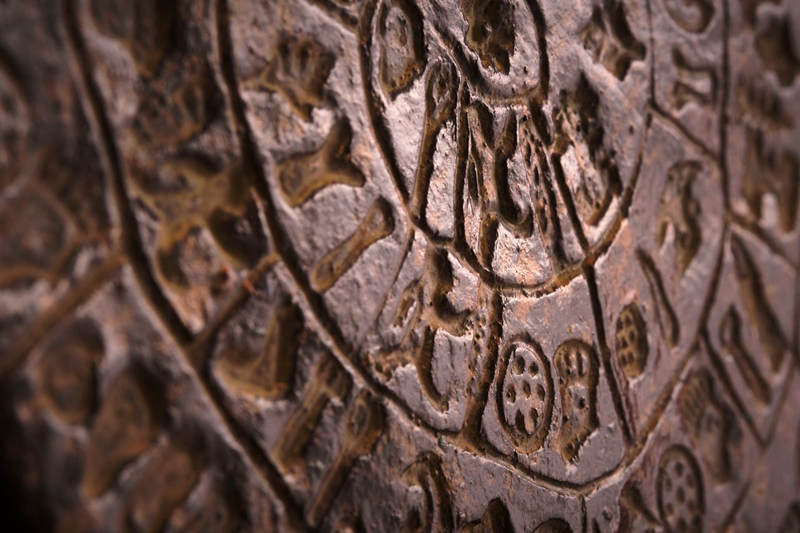
6. Europe’s Earliest Users of Writing and the Pictographic Mystery:
The Minoans were one of the earliest civilizations in Europe to use writing. In the early 2nd millennium BCE, palace scribes were already using pictographic writing to record and manage inventory. Minoan hieroglyphs come in two forms: one is the ideographic script, inscribed on three- or four-sided prismatic seals, with short inscriptions, and the other is the linear script, which is essentially a cursive form of the ideographic script, inscribed on clay tablets, sticks, balls, or discs, with slightly longer inscriptions. They functioned as labels for sealing or categorizing documents and were preserved mainly due to their chance survival in palace fires. Genuine documents were likely written on parchment, papyrus, or palm leaves, stored in wooden boxes, and have long since decomposed. Pictographic inscriptions have primarily been found in the archives of three large palaces and are quite rare. Of the 331 known pictographic inscriptions, clay tablets are exceptionally scarce. Due to the limited number of clay tablets with pictographic inscriptions and the short length of these inscriptions, deciphering has been challenging, and as of now, it remains undeciphered. The most extensive extant pictographic inscription is the famous Phaistos Disc.
7. Seals, Erasures, and Line Analysis:
The 45 different symbols on the disc appear to have been individually stamped, even though some symbols of the same type seem to have been made with different stamps, and then the disc was fired. Additionally, some symbols show evidence of having been erased and re-marked with the same symbol or a different one. Unfortunately, no stamps have been found, but their use in the production of the disc suggests that other discs were either made or intended to be made.
In addition to the symbols on the disc, dashes and dotted lines are also inscribed on the clay. The dashed or slanted lines appear hand-drawn and always appear below the symbols within the groups divided by vertical lines. However, dashes do not exist in every group. Suggestions regarding their significance include marks for the beginning of a word, prefixes or suffixes, additional vowels or consonants, poetic and verse separators, or punctuation. Finally, since these lines are irregularly executed and not as carefully marked as other symbols, some believe they are simply accidental marks formed during the manufacturing process. Dashes appear near the outer edge of both spirals. Suggestions regarding their significance include marks for the beginning or end of a section of text or as markers for linking the disc to other discs, forming a continuous text.
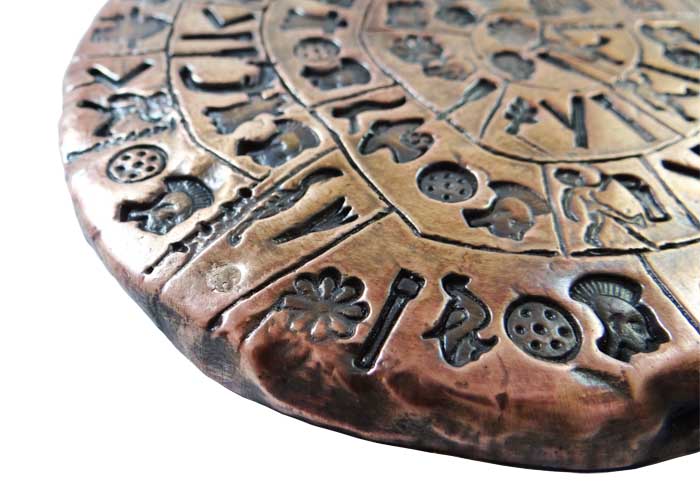
8. Interpretation of the Phaistos Disc:
After over a century of research, linguist Gareth Owens has recently claimed that he can now read 99% of the symbols on the disc, though he can “read” them without fully understanding their intended meaning. “After ten years of research, I believe that over 50% of the content on the disc has been deciphered, which was the goal I set for myself initially. I told myself that if I could successfully understand over half of the content, it would be time to share the results with the public.”
Owens states that the content on the disc is written in the language of the Minoan civilization, used to record the Minoan language. “This is the best example of Cretan hieroglyphics, which have always been written in quotes because it is entirely different from the way ancient Egyptians wrote. I hope to hear people say that Minoan is not a dead language. Knossos, Phaistos, and Crete all used the Minoan language, just like people still use other languages today.”
9. Linear A and Phaistos Disc:
Linear A is a writing system used by the Minoans (Cretans) from around 1800 BC to 1450 BC, presumed to be used for writing the Minoan language. Linear A script is the primary script used in the palaces and religious writings of the Minoan civilization. It was discovered by archaeologist Sir Arthur Evans. Its successor is Linear B, which was used by the Mycenaeans to write an early form of Greek. The texts in Linear A have not been deciphered yet. Although there is some controversy regarding the authenticity of the Phaistos Disc, it is generally believed to be genuine and is on display at the Heraklion Archaeological Museum in Crete. Many theories have been proposed, ranging from the Phaistos Disc being a prayer token to an ancient extraterrestrial message. One relatively plausible recent theory is that it encodes a message meant to be read and then discarded in a pit, making it one of the earliest forms of complex encryption.
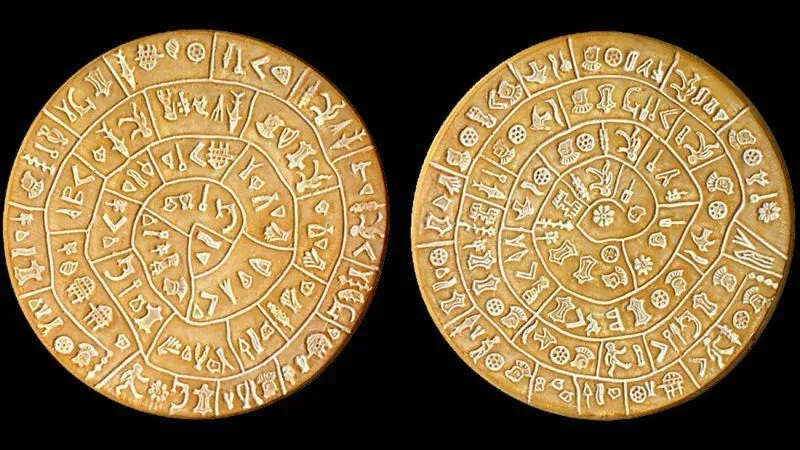
10.Linear B and Phaistos Disc:
The meanings of these symbols have sparked intense debates among scholars, both in terms of the literal meanings of each symbol and their linguistic significance. It can be said that currently, all known writing systems fall into one of the following three categories: logographic, syllabic, and alphabetic. Some argue that the number of different symbols on the disc is too few to be a part of a pure logographic system and too many to be an alphabet. This makes the syllabic approach the most likely choice: each symbol represents a syllable, and each group of symbols represents a word. In fact, this is what the later Linear B system turned out to be.”
Linear B is a syllabic script used to write Mycenaean Greek, the earliest confirmed form of Greek. This script predates the Greek alphabet by centuries. However, in such a system, one would expect to find a relatively even distribution of symbols within a given text, which is not the case on both sides of the Phaistos Disc. Furthermore, interpreting the text as a syllabic script surprisingly does not provide any monosyllabic words, with only 10% of words having two syllables. For these reasons, some have suggested that some symbols represent syllables, while others represent whole words, much like they are purely logographic.
Without any concrete evidence, various theories about the meaning of the text on the disc have been proposed, including a hymn to the Earth Goddess, a palace roster, a religious center index, a greeting letter, a fertility ritual, and even musical notes. However, unless more discs are discovered to provide linguists with a broader corpus for textual analysis or archaeologists find something equivalent to the Rosetta Stone, we must face the possibility that the Phaistos Disc will continue to be an intriguing mystery, a language that has been lost to us.
END:
The enigma of the Phaistos Disc undoubtedly represents a significant challenge in the fields of history and archaeology. While its mysteries remain partially veiled to this day, it has ignited a growing interest and passion within us. In the future, with advancements in scientific technology and interdisciplinary research, we may finally come to grasp the meaning behind this ancient artifact. Through further decryption attempts and the study of similar relics, we aspire to provide more context and significance to the Phaistos Disc.
As we look ahead to the future of the Phaistos Disc, there is hope that it may be recognized as a vital historical artifact, offering additional clues to our understanding of ancient civilizations. Even though the mysteries surrounding it are not entirely unraveled, this ancient disc continues to kindle the curiosity of people, remaining an eternal enigma in the realms of history and archaeological exploration.
More UFOs and mysterious files, please check out our YouTube channel: MysFiles
The Day After Roswell – UFO secrets and Reverse Engineering
